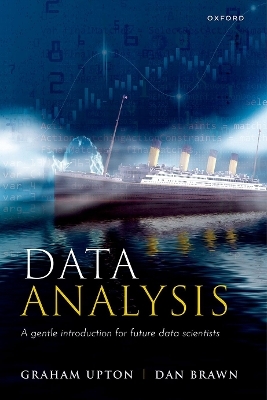
Data Analysis
Oxford University Press (Verlag)
978-0-19-288577-7 (ISBN)
Data analysis has been a hot topic for a number of years, and many future data scientists have backgrounds that are relatively light in mathematics. This slim volume provides a very approachable guide to the techniques of the subject, designed with such people in mind. Formulae are kept to a minimum, but the book's scope is broad, introducing the basic ideas of probability and statistics and more advanced techniques such as generalised linear models, classification using logistic regression, and support-vector machines.
An essential feature of the book is that it does not tie to any particular software. The methods introduced in this book could also be implemented using any other statistical software and applying any major statistical package. Academically, the book amounts to a first course, practical for those at the undergraduate level, either as part of a mathematics/statistics degree or as a data-oriented option for a non-mathematics degree.
The book appeals to would-be data scientists who may be formula shy. However, it could also be a relevant purchase for statisticians and mathematicians, for whom data science is a new departure, overall appealing to any computer-literate reader with data to analyse.
Dr Upton studied at Leicester and Birmingham Universities before taking up a position at the University of Newcastle-upon Tyne. From 1973 until 2014 he taught at the University of Essex, where his responsibilities included time as a dean and as a head of department. His varied data analysis included making sense of British voting figures, identifying gene patterns using microarrays, and estimating rainfall using many different measuring instruments. Dr Brawn is the holder of two PhDs: in Seismology from the University of Witwatersrand (1989); in Applied Statistics from the University of Essex (2009), both fields involving considerable data analysis. His extensive teaching experience covers many branches of the mathematical sciences and has most recently focused on introducing data analysis to students with limited mathematical background.
1: First steps
2: Summarising data
3: Probablity
4: Probability distributions
5: Estimation and confidence
6: Models, p-values, and hypotheses
7: Comparing proportions
8: Relations between two continous variable
9: Several explanatory variables
10: Classification
11: Last Words
| Erscheinungsdatum | 30.08.2023 |
|---|---|
| Verlagsort | Oxford |
| Sprache | englisch |
| Maße | 160 x 240 mm |
| Gewicht | 410 g |
| Themenwelt | Mathematik / Informatik ► Mathematik ► Analysis |
| Mathematik / Informatik ► Mathematik ► Angewandte Mathematik | |
| ISBN-10 | 0-19-288577-4 / 0192885774 |
| ISBN-13 | 978-0-19-288577-7 / 9780192885777 |
| Zustand | Neuware |
| Haben Sie eine Frage zum Produkt? |
aus dem Bereich


